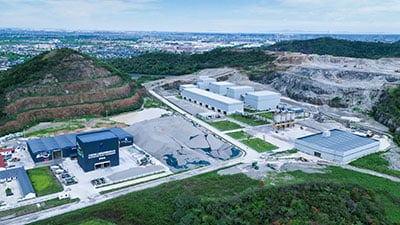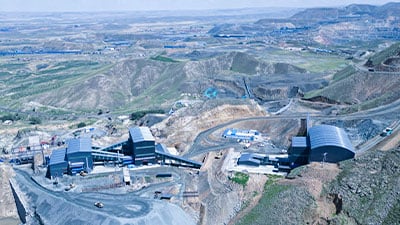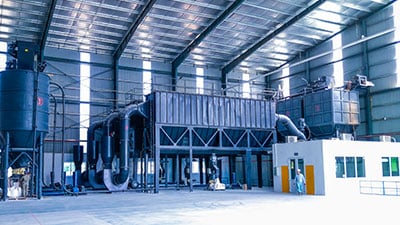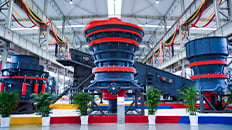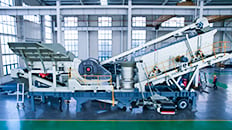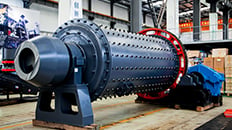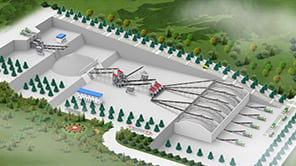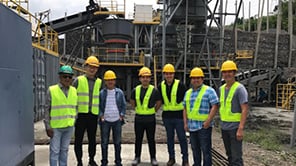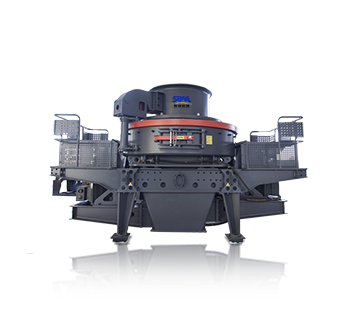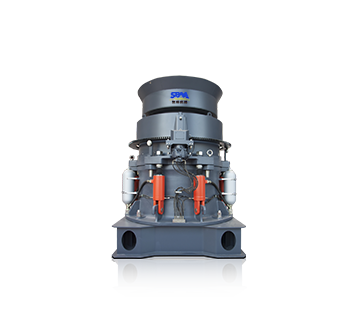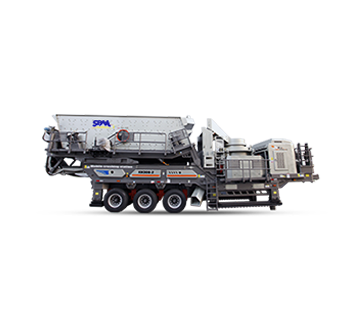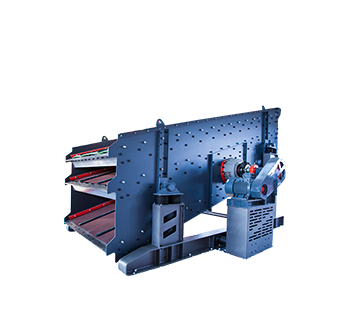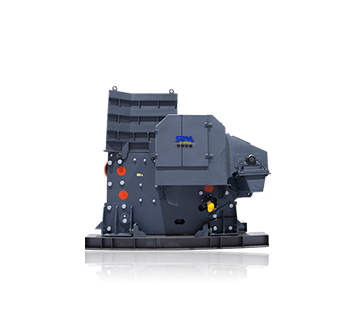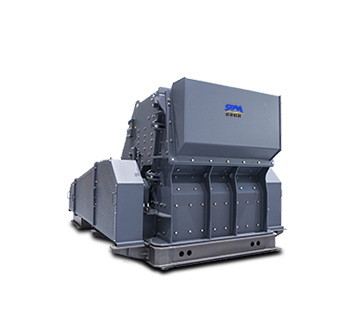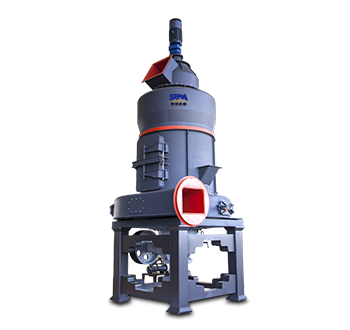Summary:Reasonable tailings comprehensive utilization technology is the foundation for enterprises to generate economic and social benefits.
Status quo of tailings utilization
1. Stock of tailings
In the mining and processing process of non-coal mines, a large amount of tailings will be produced. For example, by the end of 2017, there are 44,998 non-coal mines in China. In order to store these tailings, there are 7,793 tailing ponds supporting them. At present, the total accumulation of tailings has exceeded 2.0×107kt.
Tailings, as a solid waste with a large output and storage capacity, bring environmental issues and safety hazards, seriously constraining the sustainable development of the mining economy and mining cities.

2. Classifications of tailings
The composition of tailings is relatively complex and can be divided into the following 5 categories based on their main components:
1)Tailings mainly composed of quartz, such as iron ore and gold ore;
2)Tailings mainly composed of feldspar and quartz, such as potassium feldspar quartz vein molybdenum ore;
3)Tailings mainly composed of carbonates. The general mineral composition is calcite, limestone, dolomite, etc., as well as clay.
4) Tailings mainly composed of silicates.
Its main mineral composition includes kaolin, bauxite, wollastonite, diopside, epidote, garnet, chlorite, nepheline, zeolite, mica, olivine and hornblende.
5) Other types of tailings.
In addition to the above mentioned four types of tailings, some tailings also contain minerals such as fluorite, barite, and gypsum.
3. Hazards of tailings accumulation
Resource waste
In the early stages, due to the backwardness of mineral beneficiation technology and weak awareness of comprehensive utilization, a large number of valuable resources were abandoned in tailings.
Land occupation
The stock of tailings piles occupies a large amount of land. In addition, mining has caused a large number of goafs and collapsed areas, resulting in a larger area of land being destroyed.

Geological hazards
The accumulation of large amounts of tailings can easily trigger secondary disasters, which seriously threaten people's life and property safety, such as tailings pond dam break, dump landslide and debris flow.

Environmental pollution
Mine tailings have seriously damaged the surrounding ecological environment such as soil, plants, atmosphere and water source, etc. The air dust flying in the mining area and the surrounding area, plants withered, land desertification, water acidification, and accompanied by pungent odor, the ecological environment has been seriously damaged.
Prospects for comprehensive utilization of tailings
1. Comprehensive utilization of tailings
Recleaning after recovery
Due to backward beneficiation technology in the early stage, coupled with a small amount of single ore and a large number of coexisting and associated minerals, many tailings in the mine contain one or more other metal or non-metallic substances. Therefore, mining enterprises carry out mining operations on existing tailings ponds and recleaning of the tailings obtained after mining, and recovery of economically valuable elements from tailings, thus improving resource utilization at the source.

Making building materials
With the development of infrastructure, natural sand resources in many regions are gradually decreasing. In order to meet the supply of construction sand and gravel, many building materials companies have started to purchase tailings from surrounding mining enterprises as raw materials and use mature processes to produce sand and gravel aggregates.
Mining enterprises are basically in a state of half buying and half giving for the sale of these tailings, which can not only obtain some economic subsidies but also free up the storage capacity of tailings ponds. Building materials enterprises can also obtain raw materials at low prices, achieving win-win.

Underground filling
Underground filling of tailings is the process of adding cement and other solidification materials to the tailings to improve their consolidation time and strength. Then, the tailings are sent to the goaf of the mine for filling through the filling station. Some mines can directly consume 1/2 to 2/3 of tailings through this method.
Making fertilizers
By extracting various trace elements from tailings and properly proportioning them, fertilizers suitable for agricultural and sideline products or other cash crop can be produced. The practical application is not very extensive.
Reclamation of tailings
Tailings reclamation is to cover the beach surface and slope surface of the tailings pond after the pond is closed, and then plant crops or cash crop to protect the tailings from being taken away by wind and rain under natural conditions, thus polluting the surrounding environment.
3. Benefits of comprehensive utilization of tailings
The recovery of tailings pond can not only turn waste into treasure, alleviate the economic pressure caused by the construction of tailings pond storage from the source, but also fundamentally eliminate safety hazards caused by tailings stock, relieve resource and environmental pressure, and have high social and environmental benefits.
4. Constraints on sand making from tailings
Low level of comprehensive utilization
At present, the comprehensive utilization rate of the vast majority of mining resources is low, and this proportion has not been effectively improved for a long period of time.
Many small mines, difficult to manage
Some small-scale mines, lured by profits, adopt outdated mining and beneficiation techniques, indiscriminately mining and excavating, and even pile up and dispose of tailings in disorder. It is difficult and costly to comprehensively manage these relatively dispersed and decentralized small mining enterprises.
Lack of standardized process
There are various types and complex components of tailings, and there is currently no standardized treatment plan and process. The process and equipment configuration of tailings sand production need to be analyzed based on factors such as tailings type, mineral composition, particle size characteristics, etc.
Process flow of tailings sand making
Based on factors such as mineral composition, rock properties, and particle size characteristics of tailings, flexibly design the production process of tailings sand making, produce coarse aggregates and machine-made sand, which mainly involves crushing, screening, shaping and separating stages etc.
A scientific and reasonable sand production process should have simple and compact structure, good particle size of aggregate products, high grading, low crushing value, and low needle and flake particles content. The utilization rate of tailings can reach 85%, and the resource utilization rate is greatly improved.

Coarse aggregate: According to the grading requirements of the aggregate, after crushing, screening, shaping and sorting, waste rock turn into coarse aggregates of 5-10mm, 10-20mm, and 20-31.5mm.
Machine-made sand: The -5mm material produced by the coarse aggregate production system is used to produce 0.3 ~ 4mm fine sand and 4 ~ 5mm coarse sand after screening → sand washing → magnetic separation.
(1) Feeding: vibrating feeder.
(2) Coarse crushing: jaw crusher with feeding size 150-500mm and discharge size 400-125mm.
(3) Medium crushing: cone crusher or impact crusher with feeding size 400-125mm and discharge size 100-50mm. cone crusher is suitable for crushing tailings materials with medium to high hardness while impact crusher is suitable for crushing materials below medium hardness.
(4) Fine crushing: cone crusher and vertical shaft impact crusher, with feeding size of 100-50mm and discharge size 32-5mm.
(5) Screening and dust collecting: vibrating screen+ dry method dust collector.
(6) Shaping: shaping crusher (After screening the fine crushed material, the qualified particles are sent to the storage bin by the belt conveyor. The returned material that does not meet the requirements of particle size and grain shape is returned to the shaping crusher for processing and shaping again by the belt conveyor.).
(7) Screening and dust collecting: vibrating screen+ dry method dust collector.
(8) Material transportation: belt conveyor.
(9) Separation: coarse sand is separated by vibrating screen, and fine sand is obtained by sand washing machine, fine sand recovery machine and dehydration process.
Precautions for using sand made from tailings
Production and construction quality control of tailings sand concrete
1. The surface of tailings sand is rough and has a large porosity. In order to improve the workability of concrete, a certain amount of mineral admixtures should be added to the tailings sand concrete, such as Class II or above fly ash, slag powder, etc.
2. The water retention of tailings sand concrete is slightly poor, and water is easy to lose and evaporate, so the vibration should be moderate, and over-vibration should be forbidden. Special attention should be paid to strengthening early insulation and moisturizing maintenance (within 7-14 days) to prevent dry cracking.
Precautions for using tailings sand
1. For liquid commercial concrete that requires long-distance transportation, if the loss of slump over time is considered, the replacement rate of tailings sand should not exceed 40%. Otherwise, the loss of slump over time will be significant and will not meet the liquidity requirements.
2. When preparing commercial concrete with tailings sand, a certain amount of ground mineral admixtures (such as slag powder, fly ash of grade II etc.) should be added to reduce the adverse effects of tailings sand defects on the workability of the concrete.
3. Tailing sand is a kind of machine-made sand, which often contains a certain amount of stone powder. A small amount of stone powder can play micro-aggregate effect, which is beneficial to concrete. However, when the content of stone powder is too high, the water demand for commercial concrete mixtures with the same fluidity increases significantly, which not only increases the amount of cement used, increases costs, but also increases the shrinkage of the concrete and deteriorates its overall performance. Generally, the content of stone powder is not more than 5% (meeting the requirements of Class II sand).
5. Get the guidelines
Reasonable tailings comprehensive utilization technology is the foundation for enterprises to generate economic and social benefits. The comprehensive utilization of tailings should adopt a combination of diversified production processes, among which building sand and gravel, cement concrete aggregates, etc. has high economic benefits and can consume a large amount of tailings, are an important way for the comprehensive recycling and utilization of tailings. The comprehensive utilization of tailings is a deep-seated and large-scale system engineering that maximizes the utilization of mineral resources, protects the ecological environment, and promotes the sustainable development of mining enterprises.
In view of the current situation that mineral resources are exhausted day by day, actively exploring new ways of comprehensive utilization of mineral resources is a new approach to building green mines and ecological mining, achieving resource conservation and comprehensive utilization. If you would like to know about the preparation of sand and gravel aggregates from tailings, please contact us. SBM Group engineers will customize your own tailings sand process guidelines.
Statement: Some contents and materials of this article come from the Internet, only for learning and communication; copyright belongs to the original author. If there is any infringement, please contact us. Thank you for your understanding.

